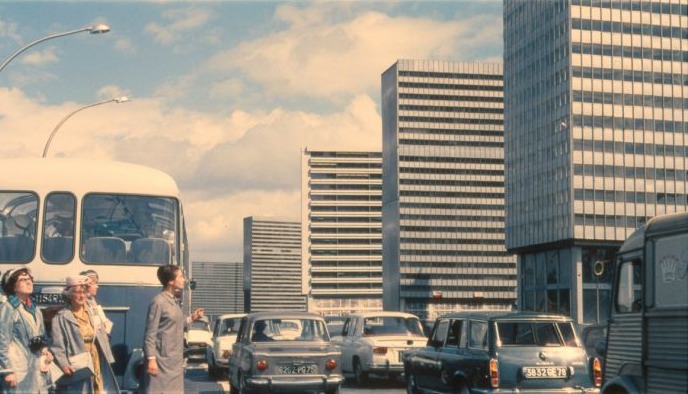How does technology relate to the way we imagine ourselves and our relationship with the world?
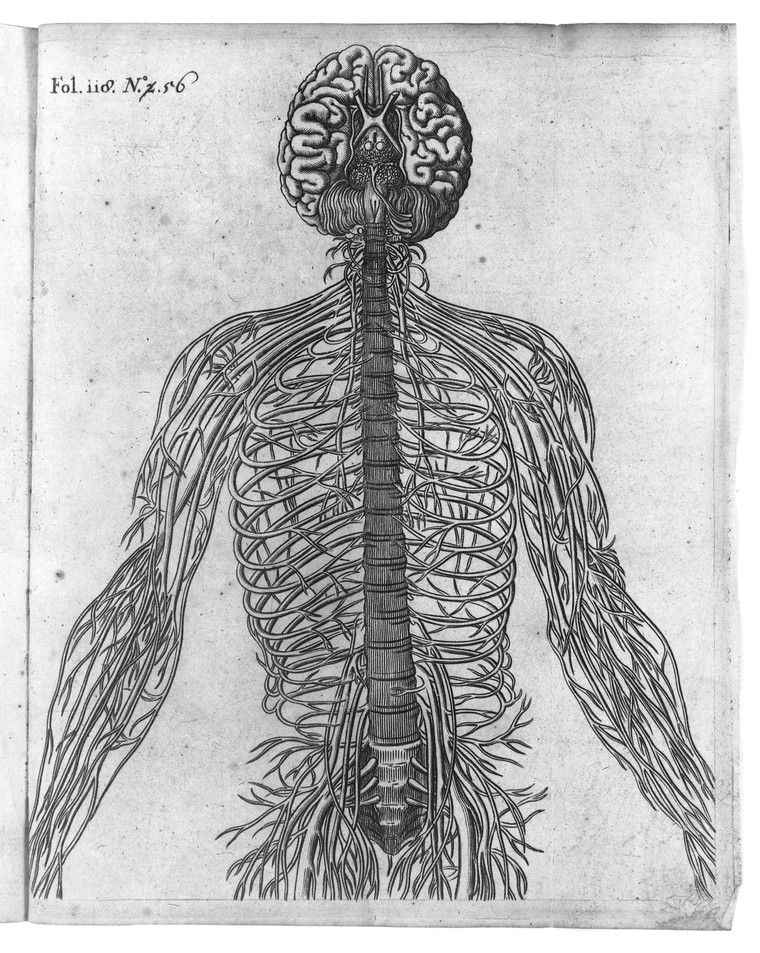 René Descartes (1596-1650): Diagram of the brain and nerves Wellcome Collection
René Descartes (1596-1650): Diagram of the brain and nerves Wellcome Collection
Perception and the present
In Decartes, there's a fundamental notion of mind-body dualism. What's the relation between mind and body (or the sould/sprit and the body)?. How does this play in the age of AI and robotics? We look to the history of philosophy and art to answer the question.
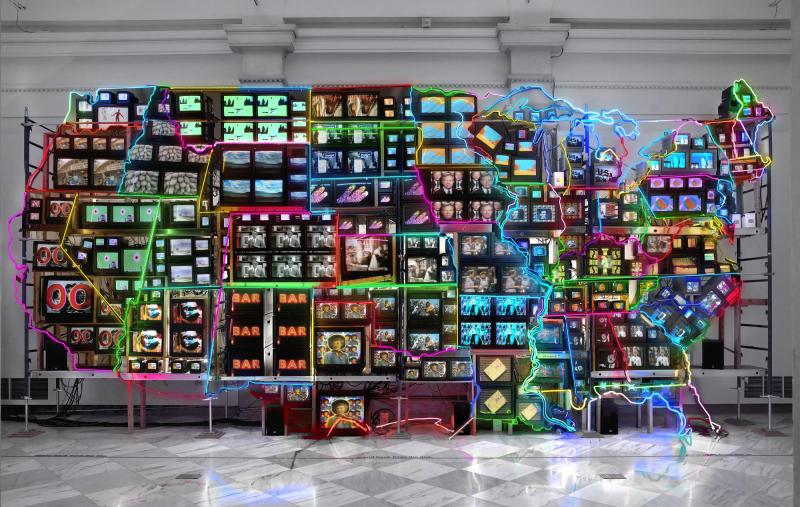 Nam Hune Park (1995): Electronic Superhighway: Continental U.S., Alaska, Hawaii. Smithsonian American Art Museum
Nam Hune Park (1995): Electronic Superhighway: Continental U.S., Alaska, Hawaii. Smithsonian American Art Museum
50 states of the US as video screens with different themes.
Marshall McLuhan (1964): Understanding media : the extensions of man
Our electric extensions of ourselves simply bypass space and time, and create problems of human involvement and organization for which there is no precedent.
This extends in the age of social media, AI and visions of the future.
Stanley Rosen (1980): The Limits of Analysis
The soul, spirit or intellect is not a mathematical relation.. The context of analysis is a dream, not an analytical discourse.
When thinkng about computuation in the brain, can you talk about it in the same context as computers? The Hard problem of consciousness: If you built a physical replica of the brain, would it be conscious? How do we use emprirical sciences to talk about ourselves?
Being and Nothing
Plato: Sophist
Visitor: When we were asked what we should apply the name that which is not to, we became completely confused. Do you remember? Theaetetus: Of course. Visitor: And now aren't we in just as much confusion about that which is? Theaetetus: We seem to be in even more confusion, if that's possible.
This dialogue is about talking about nothing. These ideas are at the root of postmodern thinking abut simulation, simulacra.
The relation between original and appearance is key to understanding art knowledge and culture. The preence ot absence of the original defines the idea of humanity and technical knowledge
Hegel: Science of Logic
A Being. Being, pure being, without any further determination. In its indeterminate immediacy it is equal only to itself. It is also not unequal relatively to an other; it has no diversity within itself nor any with a reference outwards.
Original vs Copy (Benjamin)
Plato cave allegory: this is relevant now with fake news etc (eh), but also earlier with the emergence of cinema.
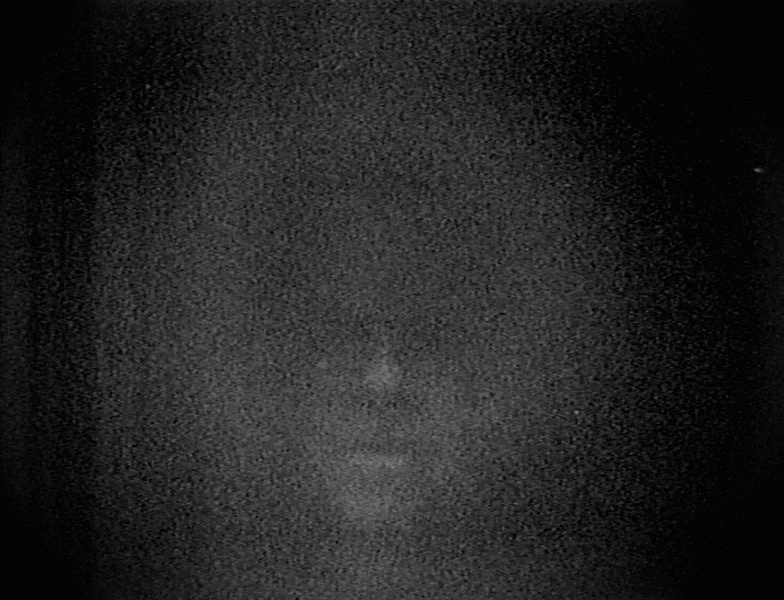 Bill Viola (2000): Memoria. Art Gallery of New South Wales
Bill Viola (2000): Memoria. Art Gallery of New South Wales
A face that seems to just about exist.
Poetical / Mathematical
This is a distinction that allows us to work between technology (empirical sciences) and philosophy
Stanley Rosen:
[the poetical and the mathematica] seem to be two discontinuous levels of human spiritual activity...
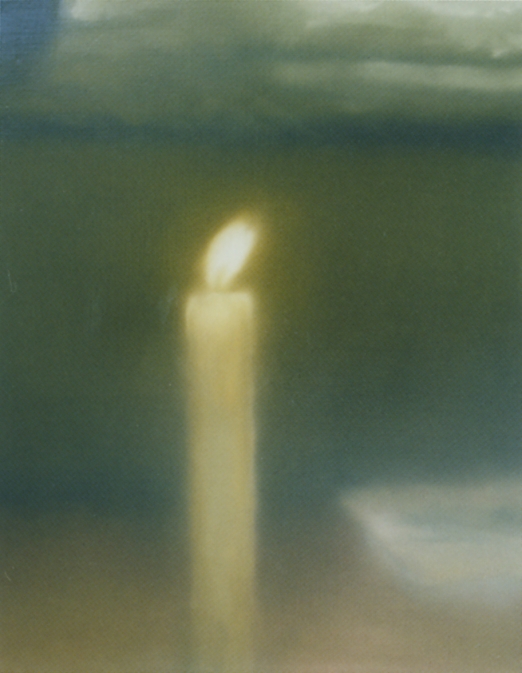 Gerhard Richter (1982): Kerze. Gerhard Richter Catalogue
Gerhard Richter (1982): Kerze. Gerhard Richter Catalogue
Photorealistic paintings of blurred photographs
Mythical / Technical
Our idea of being technical beings has a connection to the mythical. Disnchatment of Nature in the 19th century - positivism. In secularising the world (away from a spiritual understanding) how do we relate to our inner nature?
Leszek Kolakowski (2010): The Presence of Myth
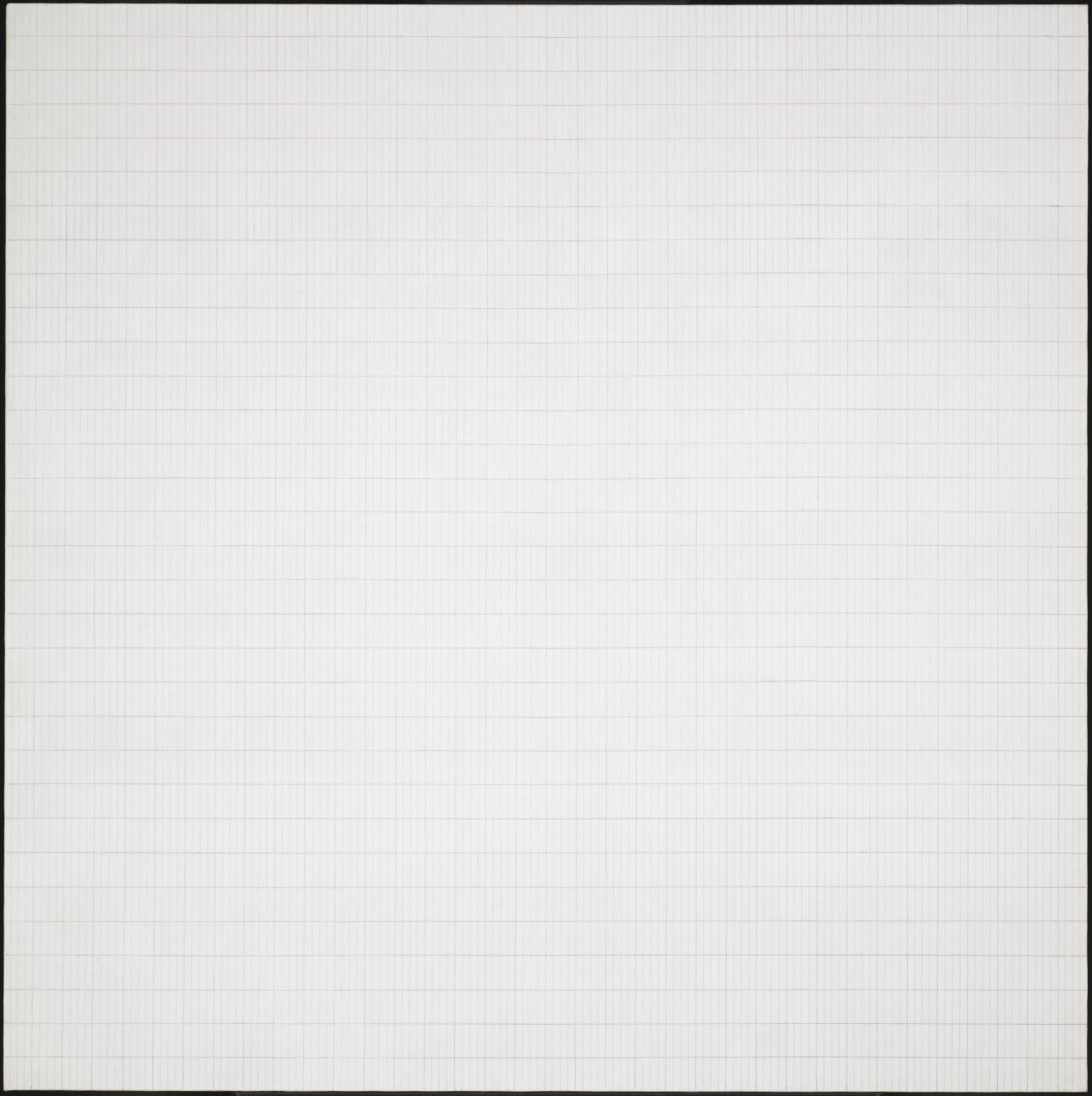 Agnes Martin (1965): Morning. Tate Modern
Agnes Martin (1965): Morning. Tate Modern
Pencil on paper grid drawings. These symbolis the inherent beauty of nature, as it exists in tension with this rational, ordered space.
McLuhan:
This extension of himself by mirror numbed his perceptions until he became the servomechanism of his own extended or repeated image … adaped to the extension of himself … [he] had beocme a closed system.
The Gadget Lover in Understanding Media.
Mary Shelley (1831): Frankenstein; or, The Modern Prometheus
Shelley is very much part of romanticism. Following Kant (in the late 1700s) these thinkers were concerned with our relationship to nature in light of science.
Prometheus made humans from clay, but also gave them fire
- V&A (2018): The Future Starts Here
- Nam June Paik at Tate Modern (2019): The Future is Now
Metaphors of Being
In the history of science, tecnology has an isometric relationship with the mind. We've imagined the brain to be like a telegraph, a typewriter, a computer.
The relations fo technology and perception are episodes of being. the concernn of present...
Gilbert Ryle (2018): The Concept of Mind criticises the idea of "the ghost in the machine".
McLuan: Counterblast (1969):
The age ofco-presence of all indivisuals is te age of communicaion — the age of instant humans. Computer data-banks dissolve the human image.
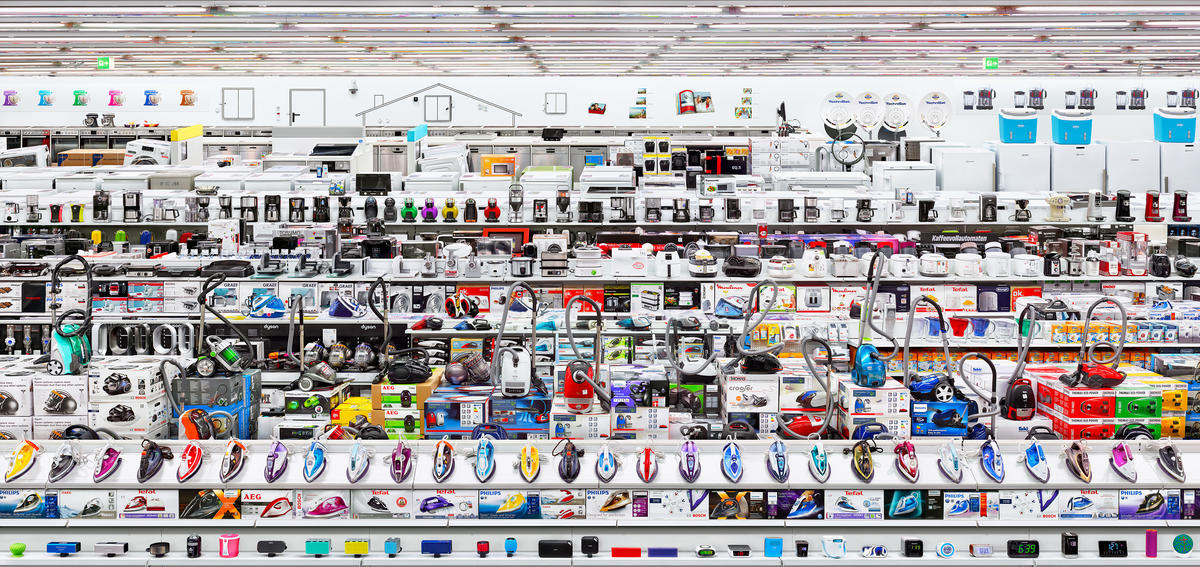 Andreas Gursky (2016): Media Markt. Andreas Gursky Catalogue
Andreas Gursky (2016): Media Markt. Andreas Gursky Catalogue
Jaques Tati (1967): Playtime
Tati had this vast set built outside paris (Corbusier-type tower blocks)
A series of sketches looking at various absurdities of modern life.
Sherry Turkle (2011): Alone toether: why we expect more from technology and less from each other This and Tati speak to the same kind of idea - how does technlogy/modernism impact our experience?
McLuhan
To behold, use or percieve any extension of ourselves in technological from is necessarily to embrace it
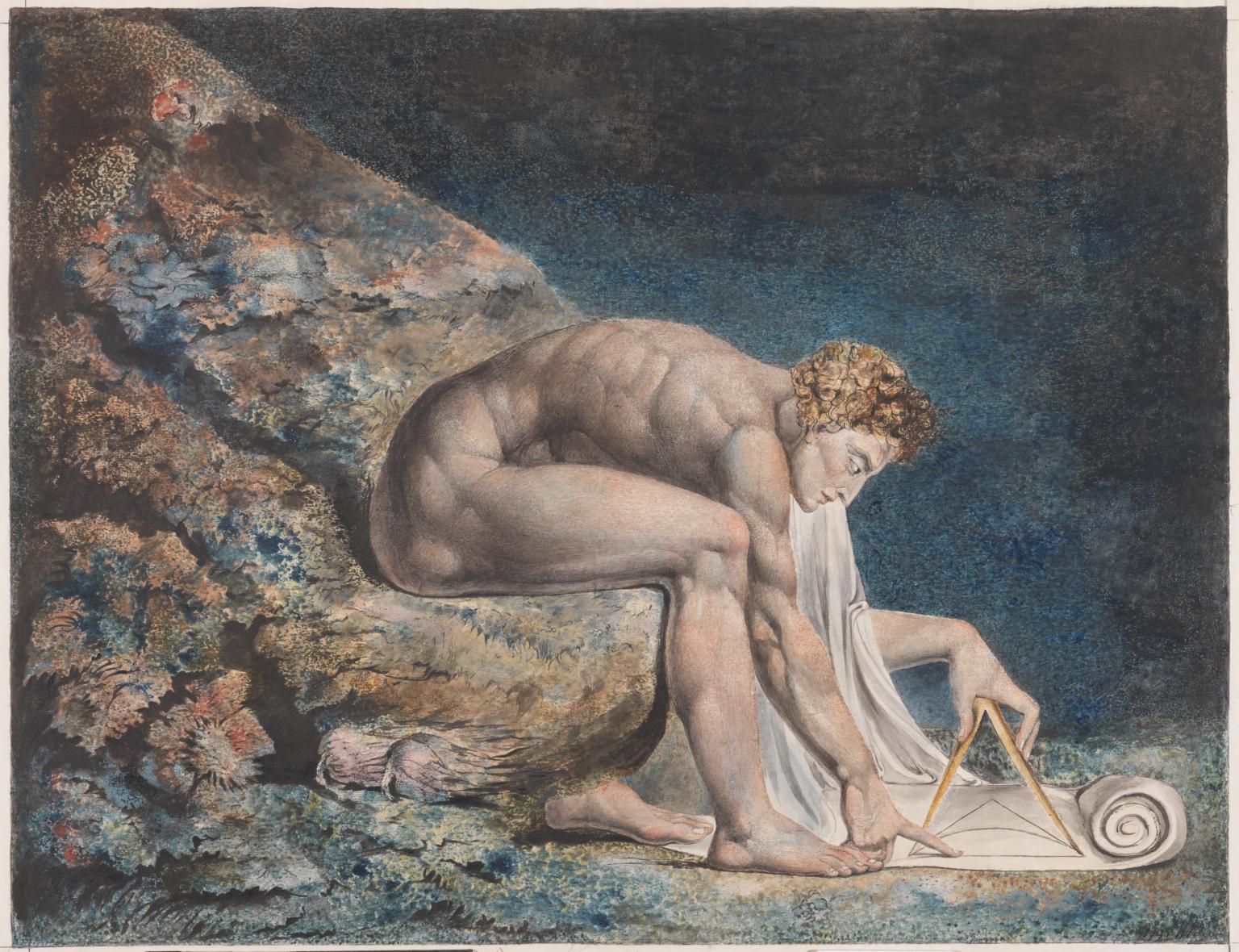 William Blake (1795–c.1805): Newton. Tate
William Blake (1795–c.1805): Newton. Tate
Blake (Jerusalem)
If perspective organs vary, objects of perception seem to vary; is the perspective organs close, their objects seem to close also.
We've entered a Camera-Civilisation
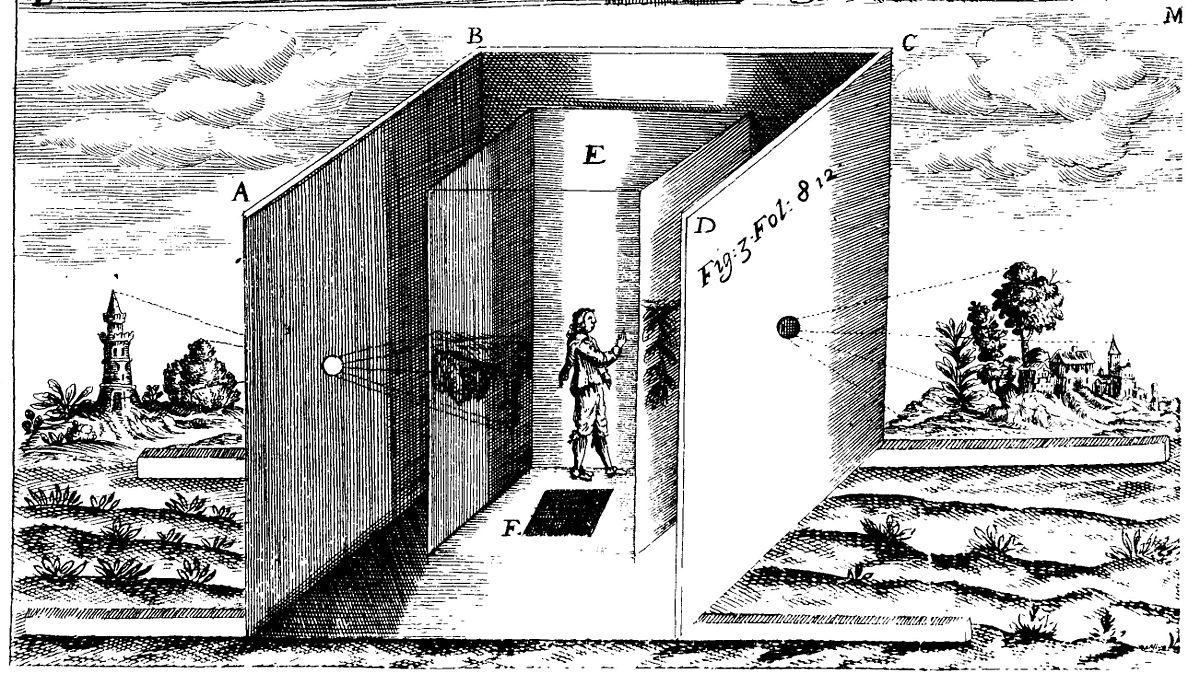 Athanasius Kircher (1646): Illustration of "portable" camera obscura in Kircher's Ars Magna Lucis Et Umbra. Commons
Athanasius Kircher (1646): Illustration of "portable" camera obscura in Kircher's Ars Magna Lucis Et Umbra. Commons
The camera obscura changes our relationship to our environment. Rather than imitating the world, you're able to reproduce it. Suddenly we've entered a different era of looking.
Da Vinci (1500) perspetive diagrams
Owen Barfield (1977): The Harp and the Camera in The Rediscovery of Meaning (1977)
An historical event may be a symbol of the historical process of which it is part. [The camera obscura is] instrumental invention in actually bringing..
The harp is shown as a poetic relation to the world, while the camera disconnects us.
Anne Friedberg (2009): The Virtual Window: From Alberti to Microsoft
Dziga Vertov (1929): Man with a movie camera
In the category of City Symphony. A dynamic expression of urban life. In many ways a film about film, the constructino of the film image itself. We see the editing room in which the film is being made.
Henri Bergson (2008): Creative Evolution
Zeno's paradoxes on the notions o movement and rest. Arrow in flight. In creative evolution, this is connected to cinema.
Lev Manovich (2002): The language of new media
Instagrammism and contemporary cultural identity
Man with a movia camera is perhaps the ost important example of a database imagination in modern media art
 Still from James Cameron (1991): Terminator 2. Vulture
Still from James Cameron (1991): Terminator 2. Vulture
The development of CGI introduces into cinema a different conception of being. No longer are images related to something out in the real world, but CGI can create any kind of illusion it wants to. Manovich writes in The language of new media:
a cybrg who can take on human appearance. His true form is that of a futurostic alloy.. While his true body perfectly reflects its surrounding reality, the very natur of these reflections shows us the future of human and machine sight.
Ray Kurzweil (2005): The singularity is near: When humans transcend biology
He imagines a point in 2050 when we reach a singularity, when human and machine intellogence are able to coalesce into one thing.
Eternime Collect you thoughts, stories and memories to reate an avatar that will live forever. Become virtually immortal.
Owen Barfield (1973): Poetic Diction: A Study in Meaning:
Only by imagination therefore can the world be known. And what is needed is, not only that larger and larger telescopes and more an more sensitive calipers should be onstructed, but that the human mind should become increasingly aware of its own creative activity
Being and Nature
Nihilism (1969)
... age of anxiety, where optimisim is defined as the belied that man is a machine, and where the spirit exists only in the dread of nothingness..
Stelarc (2015): Re-Wired/Re-Mixed: Event for dismembered body
The artists sees a live video from one place, audio from somehere else and his arm is being remotely controlled by visitors.
The artist becomes optically an accoustically de-synchronized and performs partly involuntarily. It is as if the body has been electronically dismembered, spatially distributed and possessed with...
Richard Long Line Richard Long (1967): A line made by walking. Tate
A document of an interaction with nature. A photograph is able to fix the ephemeral product of a performance.
Smiconductor (2016): Earthworks
Vasulka (2000): Mynd
All of these people are thinking in different ways about the convergence between technology and nature.
Being and the frame
The camera, the screen and the frame have become the dominannt ways we see the world. The idea of the frame goes back to Plato's cave.
Sugomoto (1993): Cinema Dome
Entire film in one image
Malevich says: cinema only lasts for 100 years from 1895 to 1995, then all cinema becomes animations
Arrival of a trian
Maxin Gorky (1896)
Last night I was in the Kingdom of Shadows. If you only knew how strange it is to be there. It is a world without sound, without colour. Every thing there — the earth, the trees, the people, the water and the air — is dipped in monotonous grey. Grey rays of the sun across the grey sky, grey eyes in grey faces, and the leaves of the trees are ashen grey. It is not life but its shadow. It is not motion but its soundless spectre.
Kodak Micro Kodak: Micrograph of tabular grain emulsion. Nitrofilm
Materiality of celluloid film. The image is fundamentally held on these tiny particles. IN the photograph we see all these gaos between the particles.
William Henry (1835): The Oriel Window, South Gallery, Lacock Abbey
Friedberg, The virtual widindow:
Once the term "virtual" is free fro its enforced association with the "digital", it can more accuraely operate as a marker of an ontological, not a media-specific, property.. Virtual images have a materiality and a reality of a different kind, a second-order materialit, liminally material
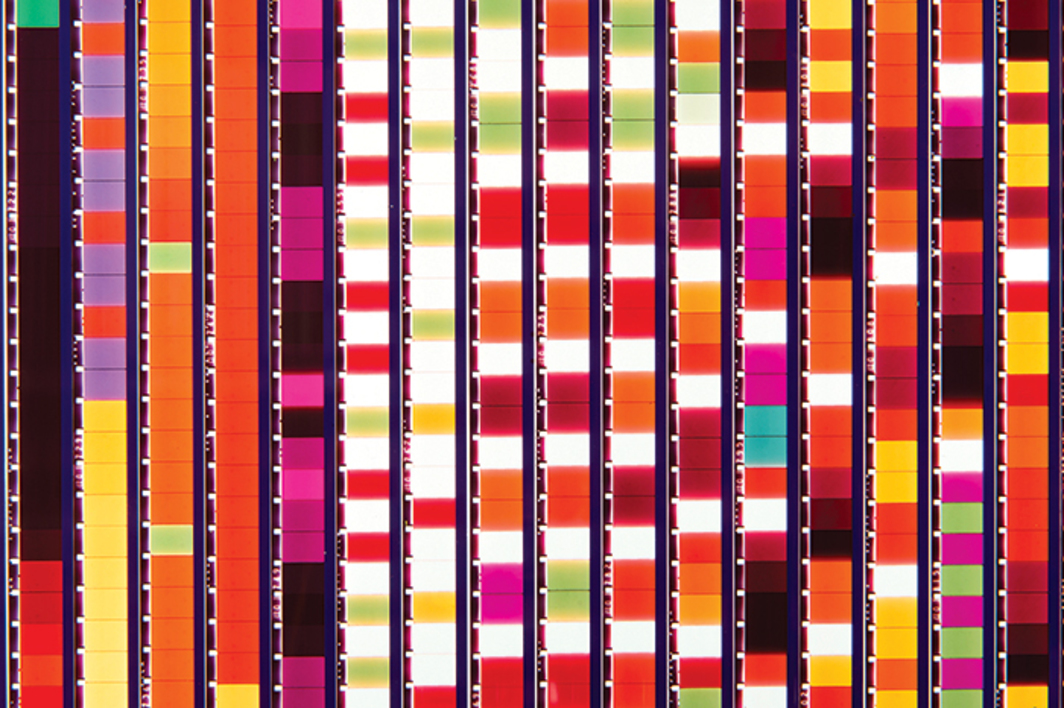 Paul Sharits: Frozen Film Frame Series (1971-1976). Artforum
Paul Sharits: Frozen Film Frame Series (1971-1976). Artforum
All frames from a film suspended in a case. This is also the time that Kodak starts to build the first digital cameras.
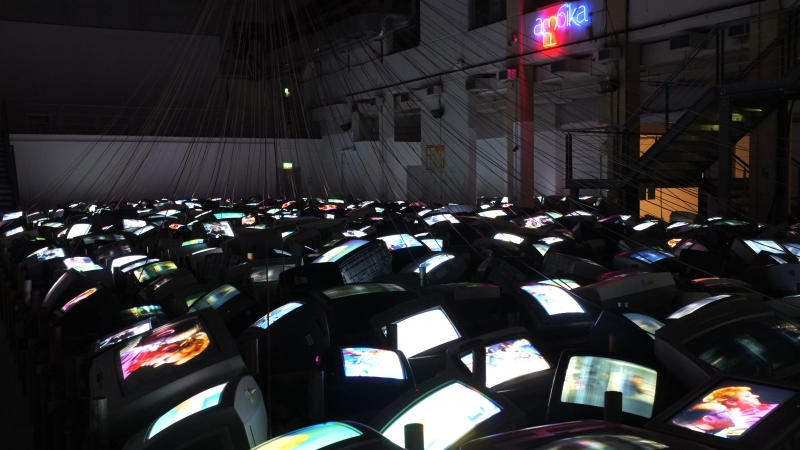 David Hall (1972-2012): 1001 TV Sets (End Piece) University of Westminster
David Hall (1972-2012): 1001 TV Sets (End Piece) University of Westminster
Also: TV interruptions. 1-2 minute films that were broadcast unannnounced into the normal TV programming. Tap film is wuite famous. End piece was made to coincide with the turning off of the analogue TV signal. All of these were tuned into analogue TV stations, then went blank.
Richar McGuire: Here (2014) Speaks to the presence and absence of the frame, and what exists inside it.
The presence and absence, the myth of the presence is the pixel.
